高考英语作文课件
- 格式:ppt
- 大小:1.44 MB
- 文档页数:18


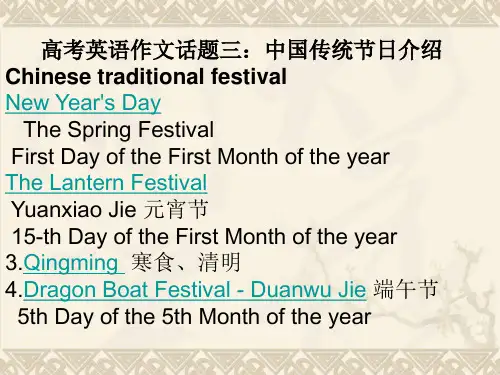
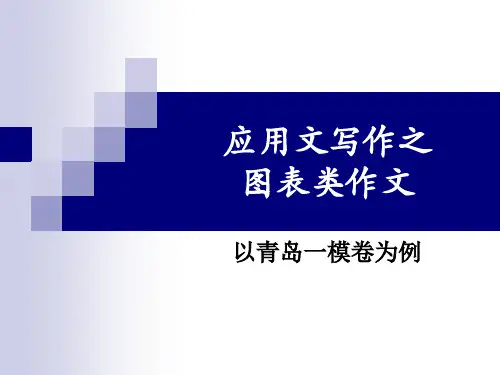
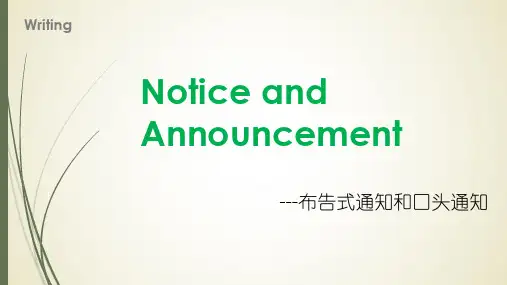

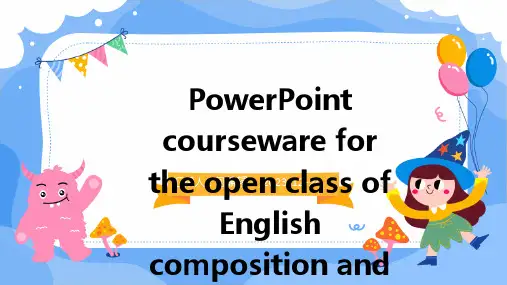
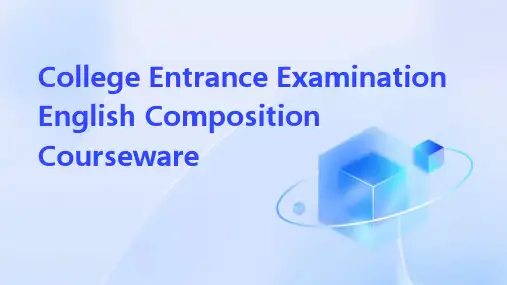

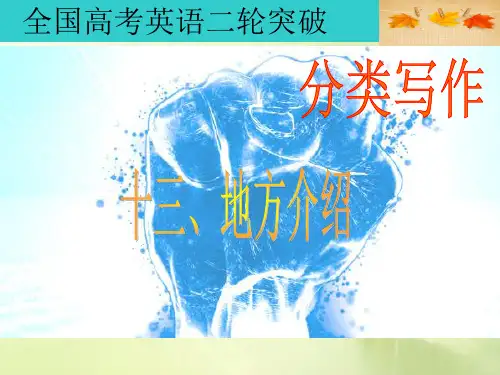

高考英语作文范文课件I. IntroductionThe college entrance examination, widely known as the "gaokao," is an important milestone in a student's life in China. With its reputation as a highly competitive and rigorous exam, many students and their families invest significant time and effort in preparing for this crucial event. In this essay, we will explore the impacts of the gaokao on students' lives and society, while also discussing its pros and cons.II. Academic PressureOne of the most apparent effects of the gaokao is the immense academic pressure it places on students. Starting from an early age, students face an overwhelming amount of homework, extracurricular activities, and test preparation. The intense competition and emphasis on test scores lead to a constantly stressed and mentally fatigued student population. The need to excel in every subject to secure admission to prestigious universities often leaves little time for self-discovery and pursuing other interests.III. Standardized EducationThe gaokao heavily relies on a narrow scope of knowledge and emphasizes rote memorization rather than critical thinking. This approach to education discourages creativity and independent thinking. Both students and teachers are compelled to focus solely on topics that are likely to appear in the exam, leading to a lack ofa holistic educational experience. Moreover, schools become more result-oriented, neglecting the personal growth and development of students.IV. Socioeconomic InequalitiesAlthough the gaokao is intended to provide equal opportunities for all students, it inadvertently perpetuates socioeconomic inequalities. Wealthier families can afford expensive tutoring and resources to ensure their children's success. On the other hand, those from disadvantaged backgrounds may struggle to access similar support, leaving them at a disadvantage. As a result, the gaokao further widens the gap between privileged and underprivileged students.V. University Admission CriteriaWhile the gaokao is influential, it is not a perfect indicator of a student's abilities or potential. It primarily assesses a student's performance on a single day, which may not accurately represent their overall capabilities. Furthermore, limited university slots and an imbalanced distribution of resources lead to fierce competition among students, sometimes resulting in unfair outcomes. Many students who excel in non-academic areas may miss out on higher education opportunities due to the exam format.VI. ConclusionIn conclusion, the gaokao, although serving as an evaluation tool, has significant drawbacks. The heavy burden it places on students,a standardized approach to education, socioeconomic inequalities, and limited university admission criteria are all areas of concern. While reforming the exam system is a complex task, there is a need for a more comprehensive and flexible evaluation process that considers a student's multiple talents and abilities. Education should focus on nurturing well-rounded individuals who can contribute positively to society rather than focusing solely on test scores.。
高考英语作文游记课件(中英文版)Title: Writing a Travel Essay in College English ExaminationSlide 1: Introduction- Greeting and topic introduction- Briefly explain the purpose of the presentationSlide 2: Understanding the Essay Question- Provide a sample college English essay question related to travel - Analyze the key components of the question- Highlight important aspects such as topic, perspective, and structureSlide 3: Choosing a Destination- Discuss the importance of choosing a destination that is meaningful and interesting- Provide tips for selecting a destination that will make for a compelling essay- Encourage students to think outside the box and choose less common destinationsSlide 4: Brainstorming and Outlining- Explain the process of brainstorming and outlining the essay- Provide a sample outline template for the travel essay- Discuss the importance of including an introduction, bodyparagraphs, and a conclusionSlide 5: Writing the Introduction- Provide a sample introduction for a travel essay- Discuss the importance of grabbing the reader"s attention and briefly introducing the destinationSlide 6: Descriptive Language and Imagery- Explain the importance of using descriptive language and imagery to create a vivid picture of the destination- Provide examples of effective descriptive language and imagery - Encourage students to use senses, emotions, and details to bring their writing to lifeSlide 7: Writing the Body Paragraphs- Provide a sample body paragraph for a travel essay- Discuss the importance of including a topic sentence, supporting details, and a concluding sentence- Encourage students to include a variety of details and perspectives in their body paragraphsSlide 8: Writing the Conclusion- Provide a sample conclusion for a travel essay- Discuss the importance of wrapping up the essay and leaving a lasting impression- Encourage students to summarize their main points and reflect ontheir experienceSlide 9: Editing and Revising- Explain the importance of editing and revising their essay for clarity, coherence, and grammar- Provide tips for self-editing and suggestions for seeking feedback from peers or instructorsSlide 10: Conclusion- Recap the main points of the presentation- Encourage students to practice writing travel essays and explore new destinations- Thank the students for their attention and provide contact information for further questions or assistanceSlide 11: References- List any resources or references used in the presentation。